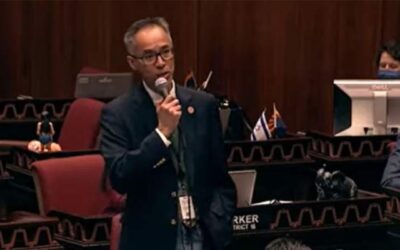By Corinne Murdock |
The city of Tucson traded its water rights in return for $44 million in federal funding that will help pay for infrastructure.
The federal government agreed to pay the city $400 for every acre-foot of water conserved — the city traded away 110,000 acre-feet through 2025.
The city struck the deal with the federal government through provisions within last year’s Inflation Reduction Act (IRA). The White House announced in April that it would use $15.4 billion from the IRA and Bipartisan Infrastructure Law to combat drought. $4 billion of IRA funding was designated specifically for water management and conservation efforts in the Colorado River Basin.
Mayor Regina Romero said the trade qualified Tucson as the “standard in water conservation.”
In order to receive the $400 per acre-foot in funding, Tucson signed onto a three-year agreement for conservation. This agreement made up the first component of the federal funding opportunity through the newly-established Lower Colorado Basin System Conservation and Efficiency Program (LC Conservation Program).
Other options for funding included a one-year agreement for $330 per acre-foot and a two-year agreement for $365 per acre-foot.
Earlier this month, Gov. Katie Hobbs joined California Gov. Gavin Newsom and Nevada Gov. Joe Lombardo in a pact to conserve three million acre-feet over the next three years. That totals $1.2 billion in federal funding.
The second component of the program consists of proposals for additional water conservation and efficiency projects, which the Department of the Interior (DOI) disclosed could involve “a variety of pricing options.” Proposals for this program component closed last November.
The third program component concerns proposals for “long-term system efficiency improvements” that would result in a “multi-year system conservation.” Proposals for this program component are currently open according to the DOI website, though former DOI public communications indicated that this component was scheduled to close earlier this year.
The DOI issued a letter last week in an attempt to spur interest in participation with the third program component.
The DOI noted that successful conservation efforts would include results in quantifiable, verifiable water savings in Lake Mead based on consumptive use reduction and recent history of use; addition of new water to the applicant’s water supply, enabling a consumptive use reduction of Colorado River water; submission from a Colorado River water delivery contract, entitlement holders, or Central Arizona Project water delivery contractor subcontract holders, including partnerships with those entities; demonstration of viability for full implementation, including by demonstrating financial and technical capability of the entity for initial implementation and long-term operations, maintenance, and replacement; and provision of monitoring to ensure the proposed benefits to the system are realized.
Recipients of the DOI’s encouragement-to-apply letter included the Arizona Department of Water Resources, the Arizona Game and Fish Department, the Arizona State Land Department, the Central Arizona Water Conservation District, EPCOR Water Arizona, and the University of Arizona.
Senior White House and DOI officials traveled to Arizona — as well as California, Colorado, and Nevada — to broker deals for water conservation efforts in April.
As part of the deal, the Biden administration set aside $233 million for the Gila River Indian Community, $36 million for Coachella Valley conservation, $20 million for four small surface water storage and groundwater storage projects in California and Utah, and over $54 million to repair aging water delivery infrastructure such as the Imperial Dam.
Corinne Murdock is a reporter for AZ Free News. Follow her latest on Twitter, or email tips to corinne@azfreenews.com.








